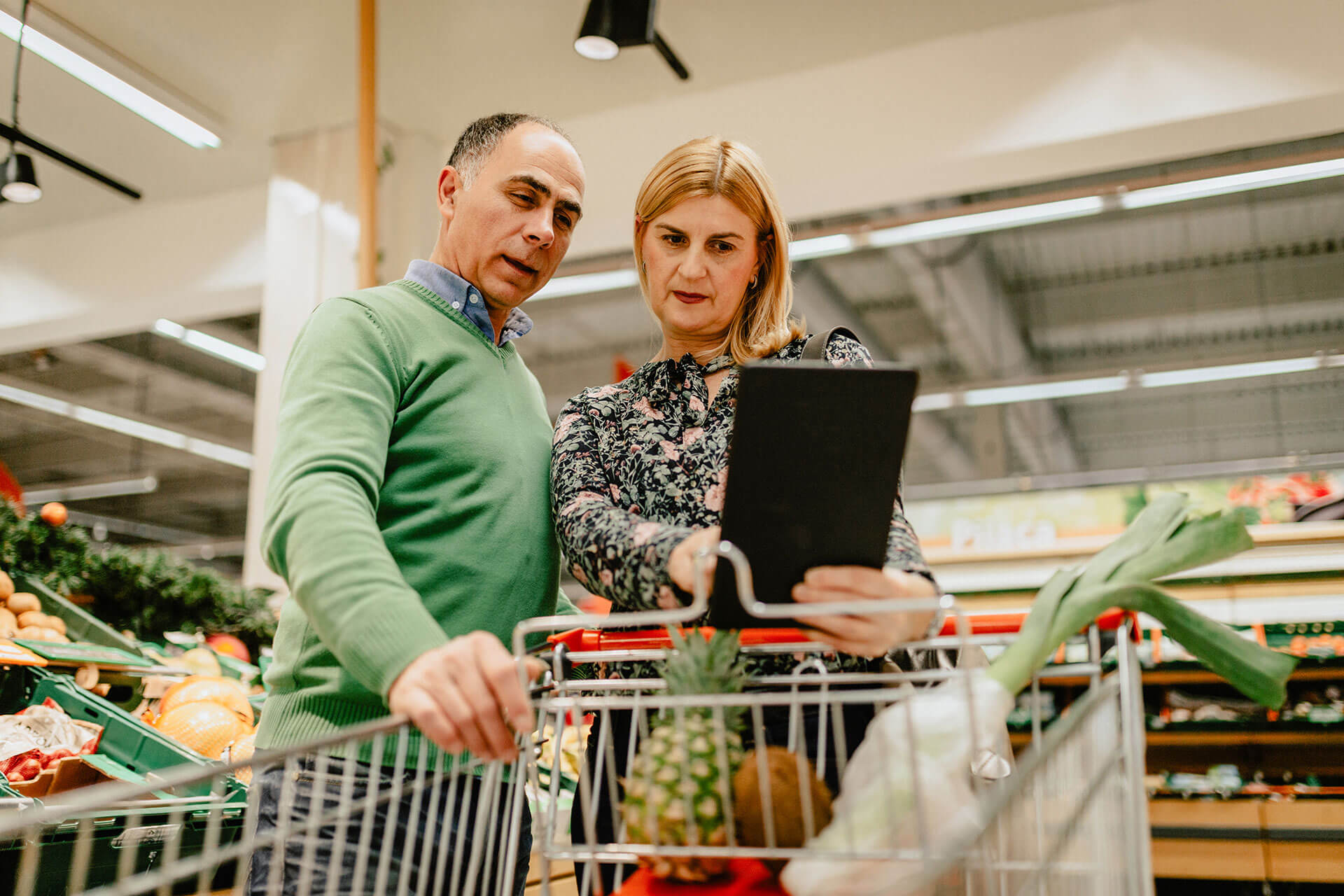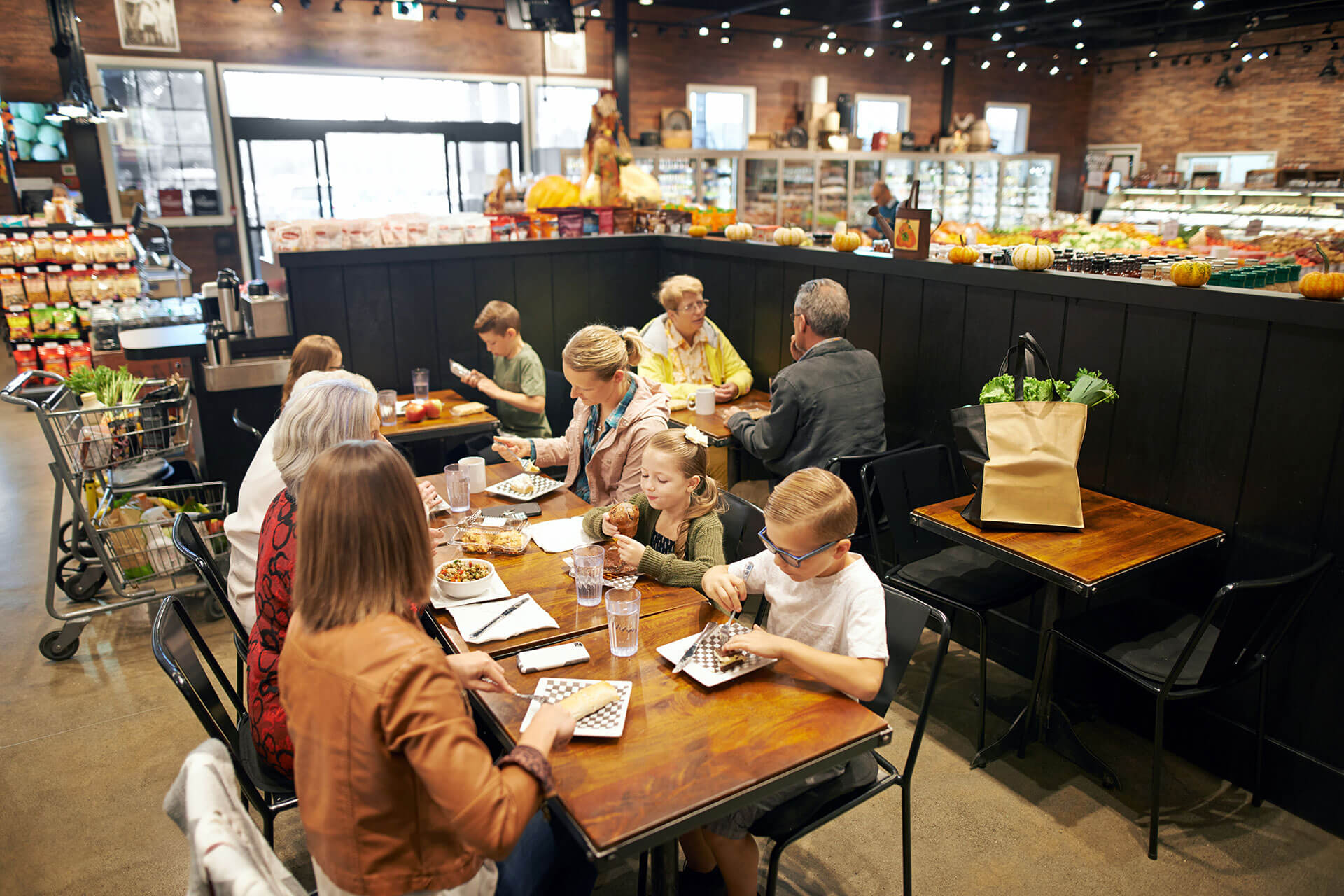We made one of Europe’s most ambitious retail transformations happen during COVID
Interviewed by Jens Torchalla and Sirko Siemssen
Interviewed by Jens Torchalla and Sirko Siemssen

Marcel Haraszti has been a member of the Management Board of REWE International AG and Chairman of Austrian supermarket Billa AG since 2016. In 2020 and 2021, REWE International’s Austrian food retail business was comprehensively transformed. Billa and Merkur, which had previously been operated independently, were merged, and the Merkur brand was changed to Billa Plus. The moves drove both organizational synergies and a significant upgrade in the customer proposition strategy for the years to come.
Haraszti talked about this large-scale merger and the transformation of the retail organization and customer proposition with Jens Torchalla, a Partner in Oliver Wyman’s Retail & Consumer Goods Practice, and Sirko Siemssen, Global Leader of the Practice. He also addressed the challenges posed by the COVID-19 pandemic.
A few years ago, it would have been unthinkable to merge the Merkur and Billa brands. But it was necessary from both a customer and a cost perspective. We don't have different customers. We have the same customers with different missions. Customers who shop at Billa also shop at Billa Plus. They also shop online and use the jö loyalty card that REWE International created. We have to connect with them and serve them as individual customers across all touchpoints.
Also, the organization had grown far too complex. We were trying to combine independent retail banners with cross-banner synergies in a triangle consisting of REWE International AG, Billa, and Merkur. Instead, we created a much simpler organization that aimed to improve customer services and upgrade our stores. This puts us in a better position to deal with future changes. Of course, all of this had been well thought through: We prepared the transformation in 2018 and 2019, merged the organizations in 2020, and merged the brands in 2021.
Obviously, things were disrupted when COVID hit. On the one hand we had our plan, which we wanted to stick to, and COVID disrupted it. On the other hand, COVID has taught us that we need to be more flexible. Humans achieved superhuman things: We made one of Europe’s most ambitious retail transformations happen during COVID.

The future of retail is personalization, supported by digitization and the right local entrepreneurship. Now that everything is under one brand and one leadership with one data backbone, we can better serve each individual store and customer. We can provide personalized products and services on site by being close to the customer, and this will be the role of brick-and-mortar retail. Only through digitization can we put together the optimal ranges and make the optimal quantities available.
Local entrepreneurship will also be an important factor. We are planning to establish a franchise system, which will coexist with the integrated retail branch system. We must promote entrepreneurship throughout the business and the retail organization. A major priority for me is to make the company faster and more agile. Instead of one big steamship, it will consist of many agile speedboats.
The retail customer was already becoming more individual, driven especially by digitization. This was accelerated by COVID. The online business grew 80% in the first year of COVID and another 25% in the second year. Digitization is also taking place in brick-and-mortar retail, where all processes and procedures are becoming digitized. In addition, order proposals, quantity planning, and the merchandise management system have been digitized. Digitization in retail is an incredibly exciting field that needs the right people to handle it.
Exactly. That's a huge opportunity, and it fits the spirit of the times. Of course, every entrepreneur or franchisee must have the basic business under control. But, in addition, in physical retail he or she will always be closer to local customers and staff and make a difference to the local offer and to the engagement between staff and customers.
This strategy will also help to develop our management approach: The old, hierarchical, conservative management approach is already dead. The new management style is made even more dynamic by the interaction with franchises and is therefore much more cooperative, open, and flat.
Everyone is now aware of the impact we have on the climate. We are the generation that still can do something. We are responsible for the quality of life of future generations. Sustainability in retail is therefore not a niche topic; it runs through the entire company. For example, we built the first green building in Styria, and we have 100% green electricity in all our stores across our network. This renewable energy does not just reduce CO2 emissions; it also reduces costs. Ecological and economic goals go hand in hand.
During COVID, we had delivery delays for international products, and people became more aware of the distances involved: Today, there is a strong desire for regional products. A high proportion of our fresh products are regional, and fresh meat, eggs, milk, bread, and pastries come 100% from Austria. Regional products of course also have the advantage of being readily available.

We are in a challenging social and economic situation. The gap between rich and poor is widening, and social tensions are increasing. Inflation fuels these problems. The greatest task is to bring people back together. Our responsibility is to offer people a certain normality in the supply of goods.
So far, inflation has been mainly driven by energy and has only partially passed through to consumer prices. However, energy prices affect wholesale prices. We will negotiate hard and only accept terms that we consider feasible. We’ll have to think very carefully about how and where to make price adjustments for each item. We will also have higher costs for things such as energy and paper, so it's of course helpful that the transformation efforts we have discussed have reduced our cost base. We're already much leaner, but there's still scope for becoming even more efficient.
First of all, we are not done! The transformation will continue in 2022. We want to establish the franchise model and bring the team even closer together. Before you start something like this, you need the right people, and you must make sure that people trust you. As a result, you have to be confident and convey to people that we are on the right path, that it's still normal if some things don't go perfectly – that we'll solve things together.
We often underestimate our role as top managers. Even when there are problems and when things are difficult, we should walk through offices with a smile, ensure motivation and purpose, and thank people for their contributions.

Voices of the Industry
HOME
Voices of the industry
Foreword
How Retailers Are Turning Upheaval Into Opportunities
Rami Baitieh
To Be The Best Digital Retail Company, We Have To Put People At The Center Of Our Activities
Duncan MacNaughton
Consumer Goods Manufacturers must listen to their workforce
Silviu Popovici
we put sustainability at our core, to create positive change for both planet and people
Thomas Jonas
Fy will feed astronauts!
Marcel Haraszti
We made one of Europe’s most ambitious retail transformations happen during COVID
Malina Ngai
We’re working relentlessly to promote inclusion and diversity
Philippe Guettat
Premiumization has been key to the success of our wine and spirits brands
Nina Jönsson
Our store of the future must be a destination: full of inspiration, innovation, and sustainability
Richard McKenzie
We built our technology system for grocery
